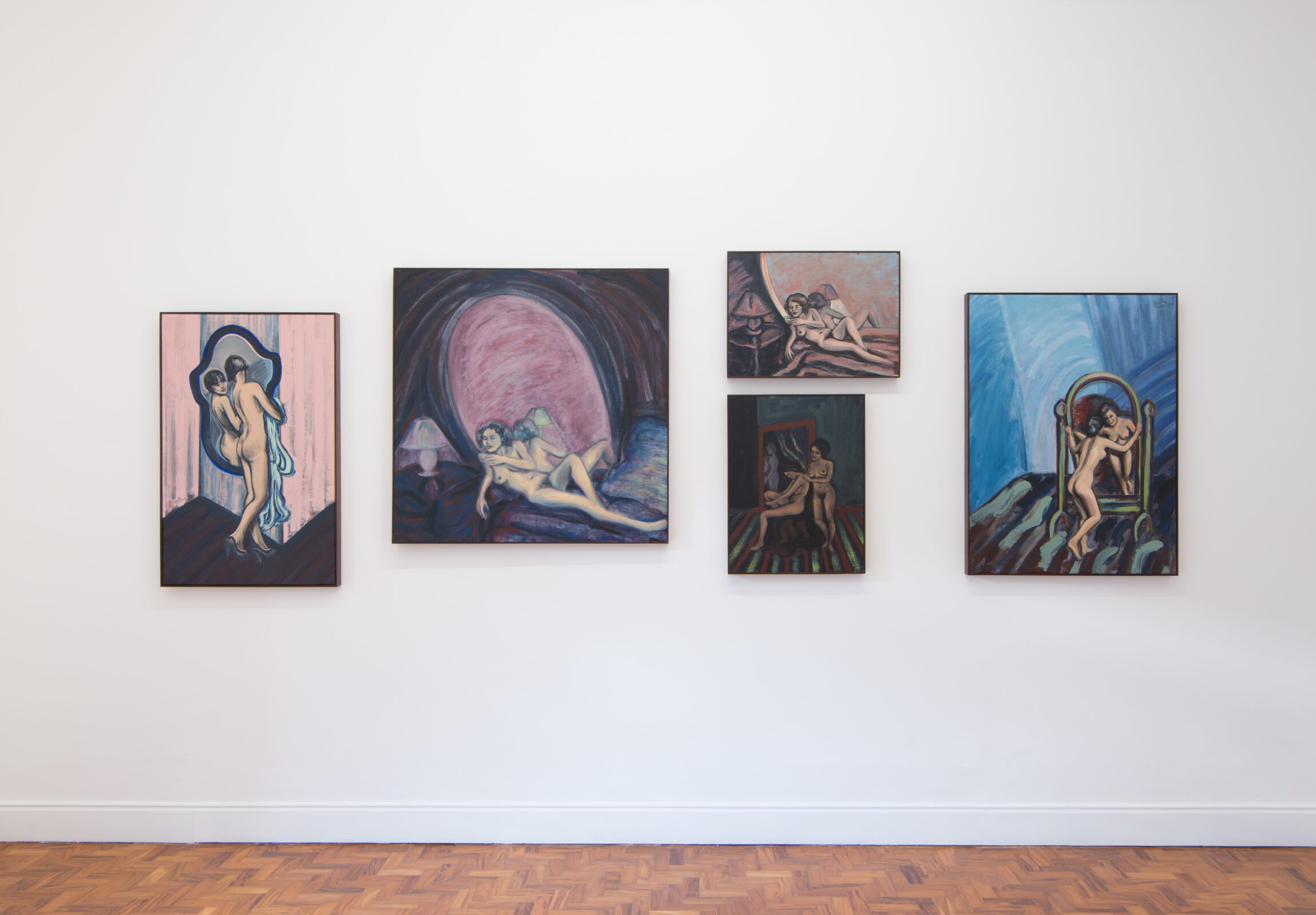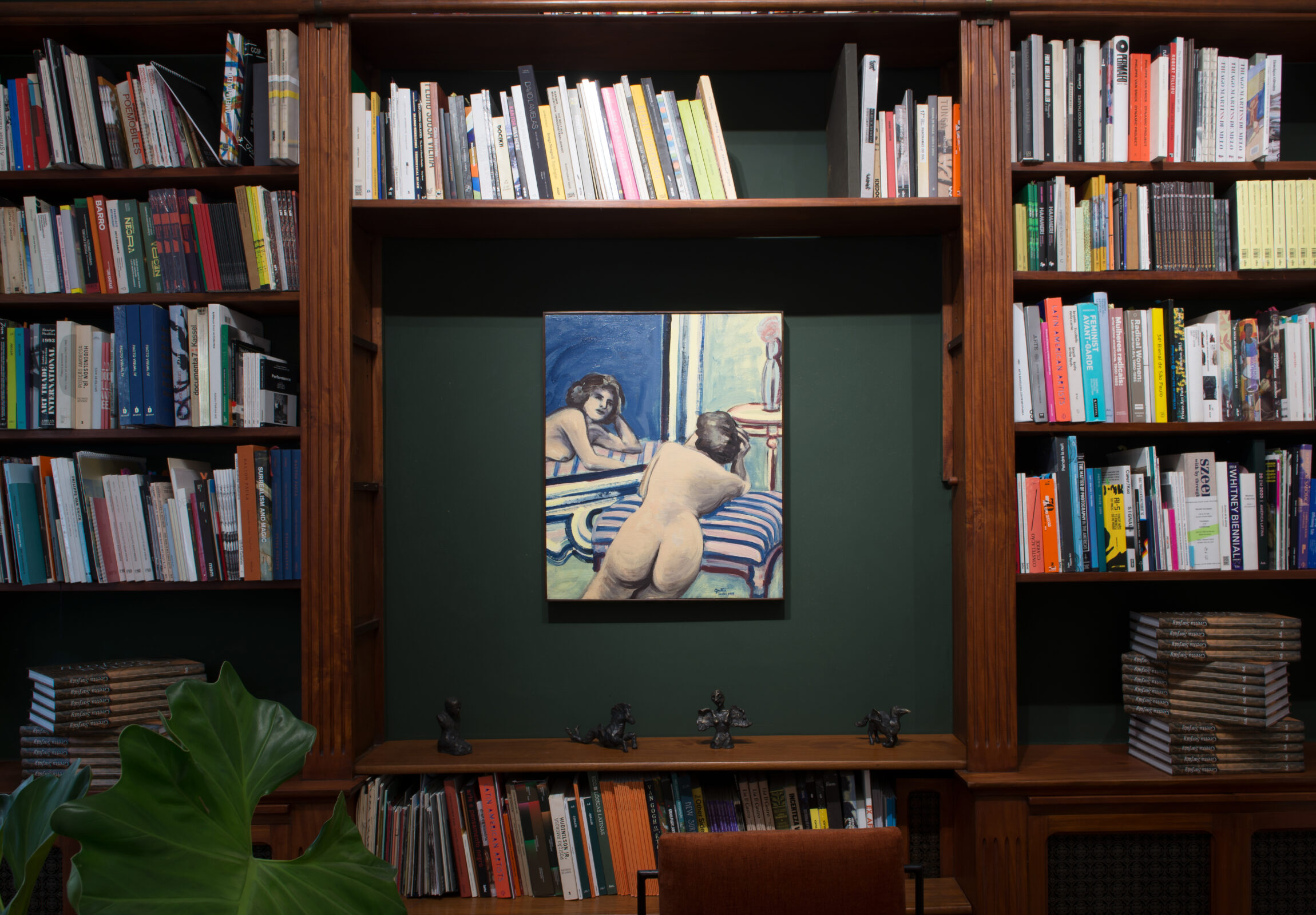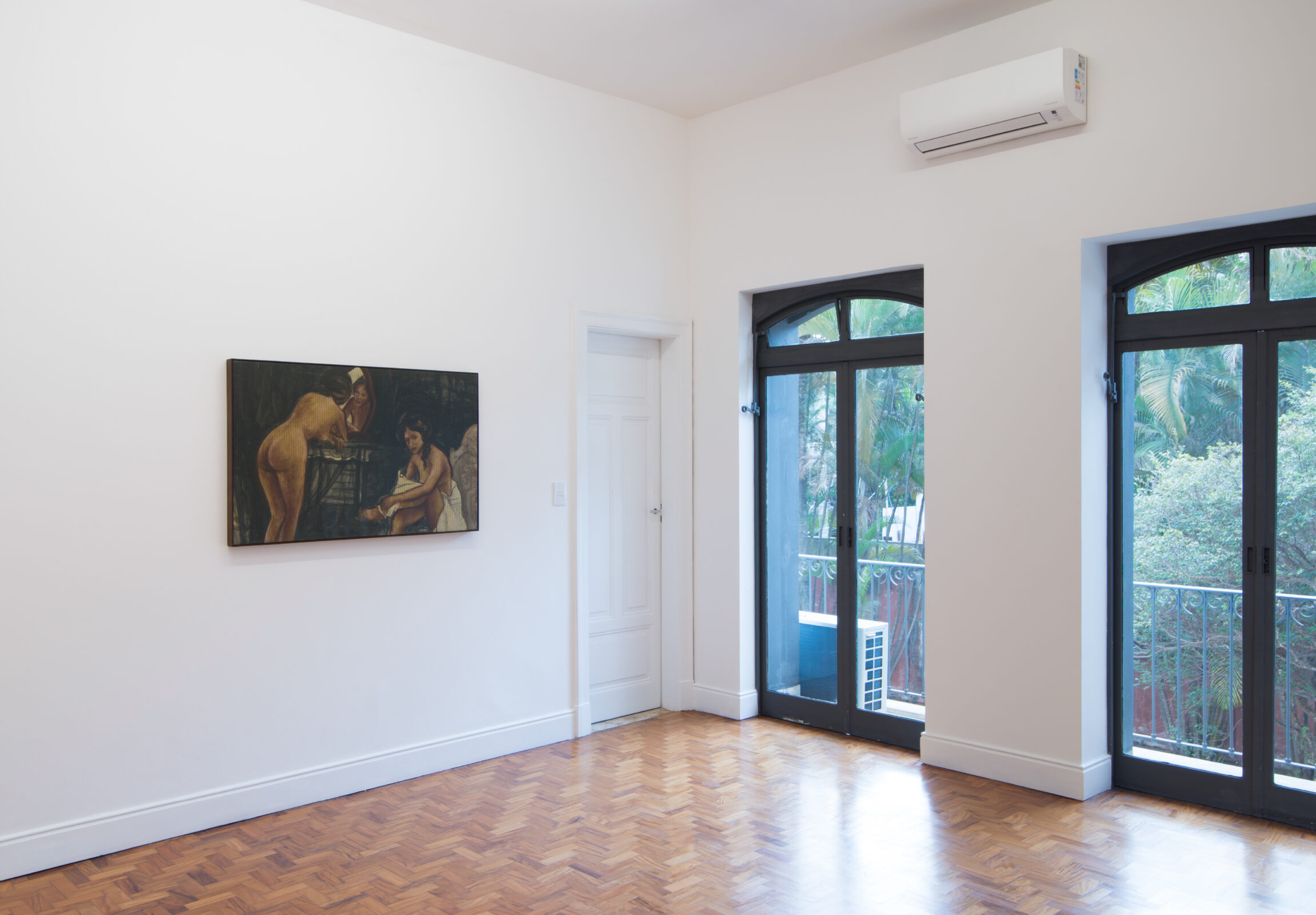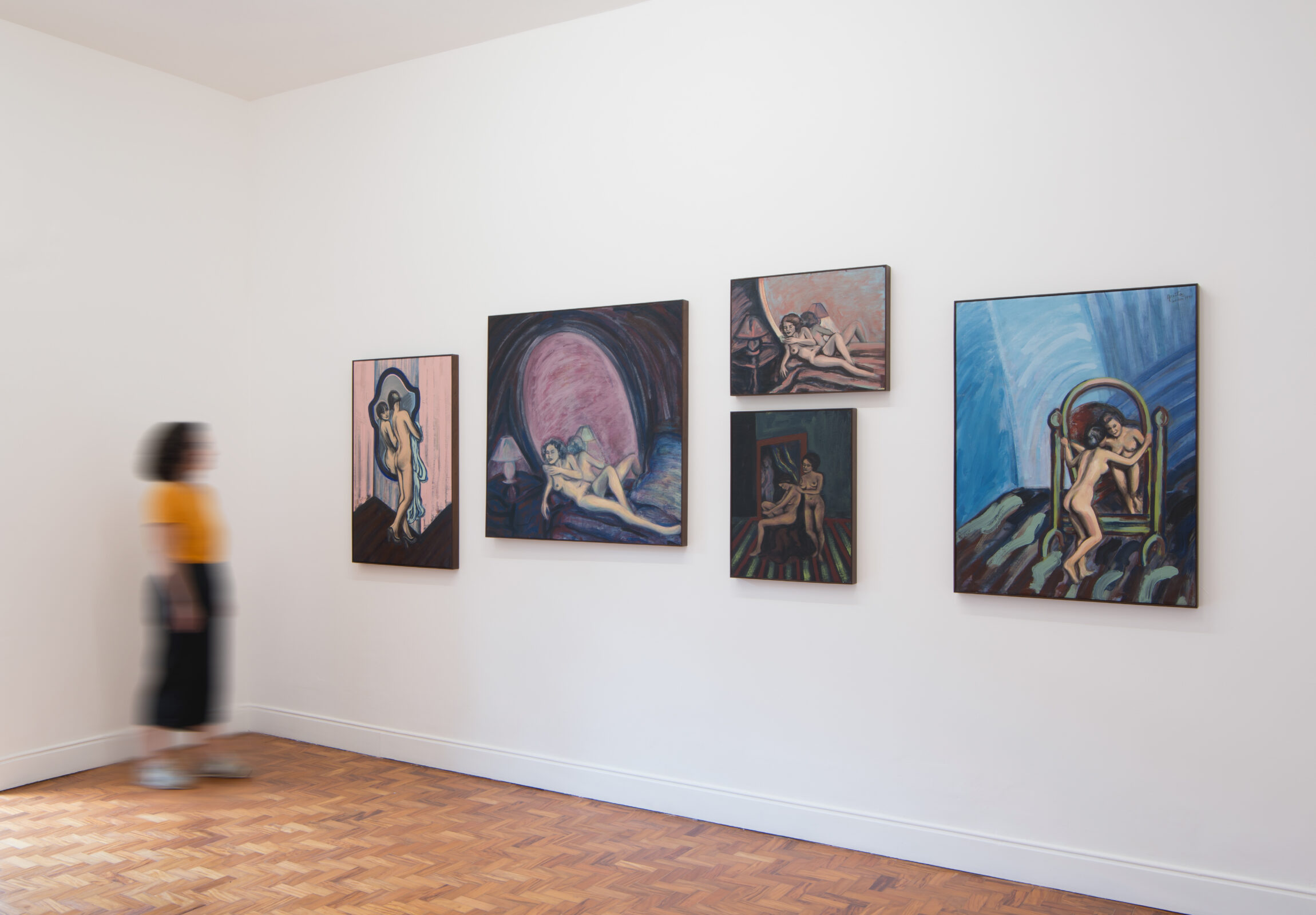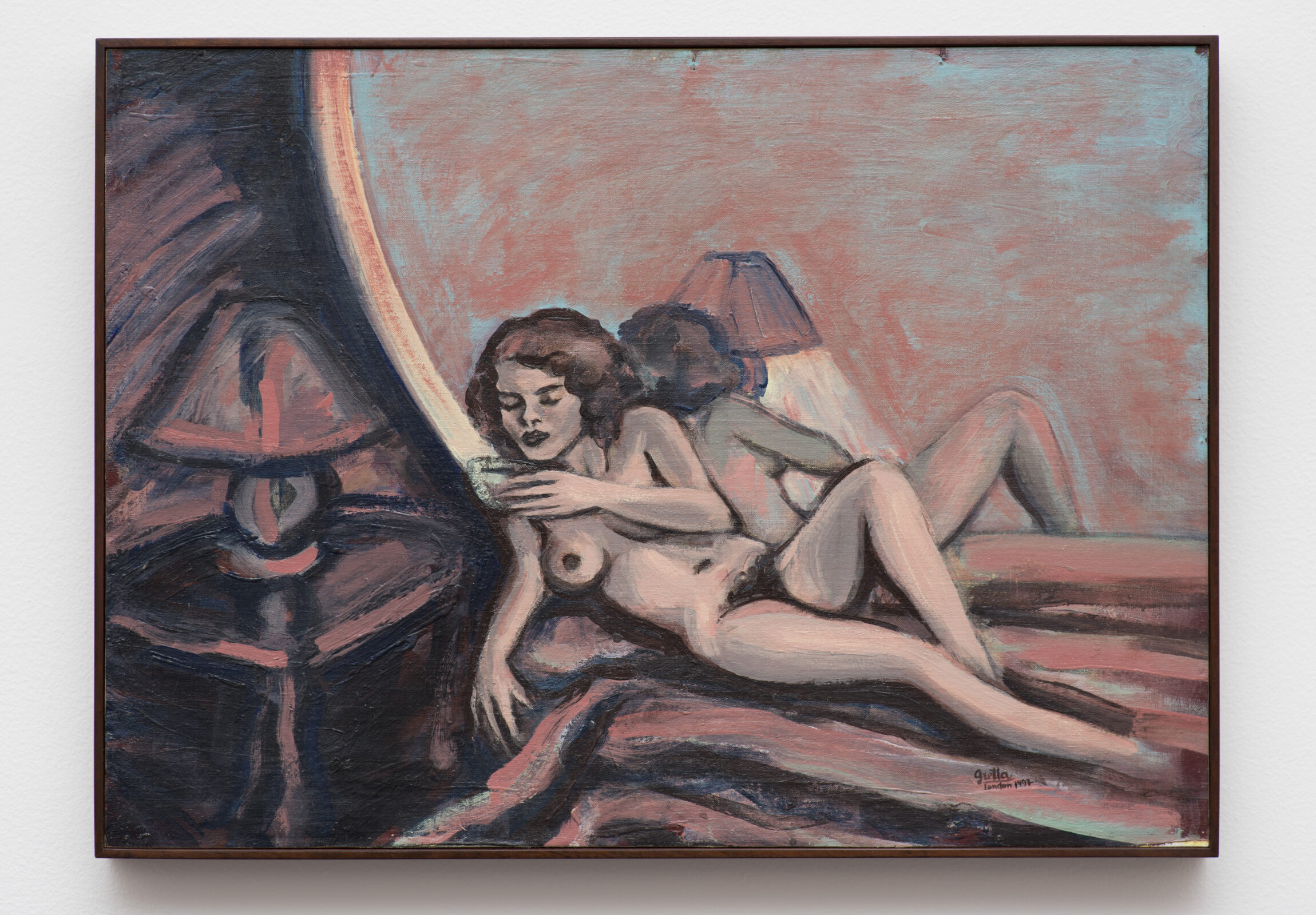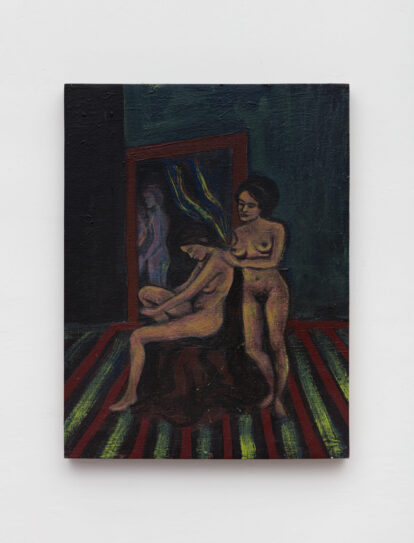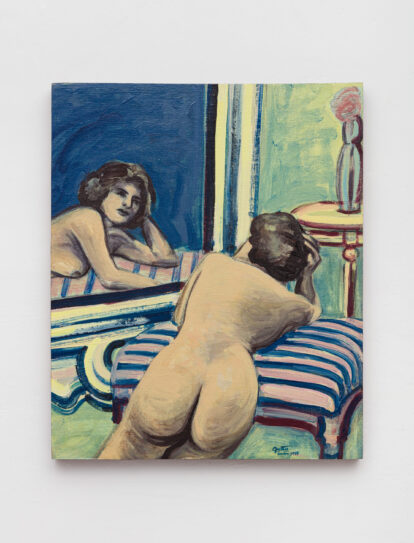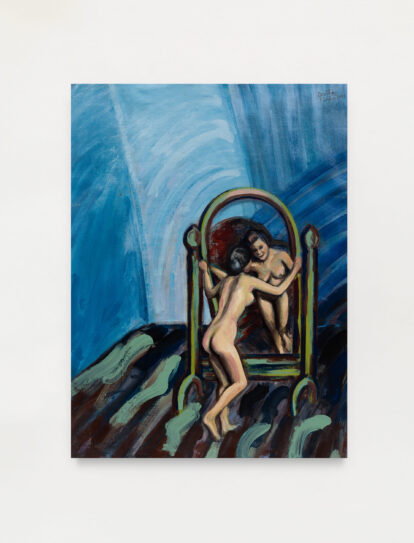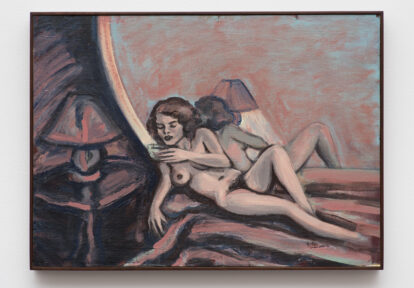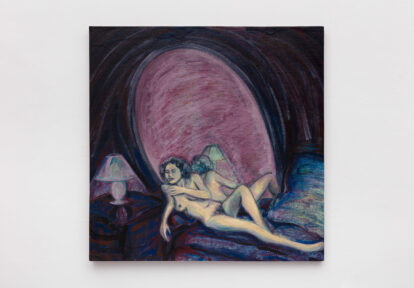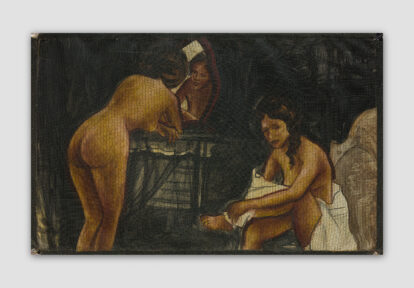Gretta Sarfaty/ almost reflections of a woman is the name of this exhibition – held by Martins&Montero in partnership with Central – that encompasses nine unpublished works produced in acrylic paint on canvas by the artist in London in 1997.
These works are part of a series that Gretta Sarfaty called Reflections of a Woman, a title that contains a certain ambiguity, as the word “reflections” means both reflections (changes in the direction of light) and reflections in the sense of meditations, thoughts, ideas, opinions, and even philosophies.
But in painting, there is no philosophy. There is painting. Only painting. Painting with its colors, shapes, lines, contours, movements, depth, and perspective. If there is any thought, it is in the painter’s brush, who employs their body in the act of painting and transforms the world into painting, as Valéry said.
Because the painter is part of the world and maintains a mysterious relationship with it. The world is also within the painter. A kind of contradiction. A paradox. As if there were a mirroring between the two. A riddle that makes the painter both a seer and visible. A recognition between the two that vision is a kind of mirror and also the concentration of the entire universe.
Paul Klee said he looked at things and things looked back at him. André Marchand said that the forest observed him while he painted it. Matisse liked to depict himself in the act of painting, as if, by doing so, he could better reflect on himself and the things he painted through drawing.
Many painters dreamed of mirrors and painted mirrors. The mirror in Dutch painting is the eye of the painter. The round eye “that intrudes into the frame” to reflect to the viewer what is outside the painting. The eye that looks back at the viewer. A painting within the painting itself. A reflection of the world. The reflection of the painter. The painter.
Because the painter thinks through painting, as Cézanne said. And the painter’s thought is by no means a practice separate from their work, like a philosophy, an aesthetics manual, or an art critique, but constitutes the very praxis, that is, the artwork itself.
And the artwork, especially painting, is self-sufficient to be seen and contemplated. Anything said about it is opinion, critique, and something done a posteriori. Perhaps none of this corresponds to the spontaneity of the act of painting, to the subjectivity of the painter, or to the art object (which mute) is capable of speaking for itself.
Because the art object constitutes “the thing itself.” It is the phenomenon, a word of Greek origin that means “appearance.” And it requires an instant, from the one who contemplates it, in which there is a kind of forgetting of the world and even of oneself, for it to emerge, appear, and finally reveal itself as phainomenon.
Gretta Sarfaty/ almost reflections of a woman asks for this time. It is as if, by forgetting the world, things, the mundane, and the clock time, one could enter each room painted by Gretta Sarfaty and be alone with each nude woman portrayed by the artist. And with them, linger in front of the mirror.
Because to look at the nude, one must also be (almost) nude. And forget the time. Forget the worries. Forget daily life, the ordinary and the banal. More than that, forget any theory. Because to admire the nude body of a woman, no philosophical system is needed. One only needs to have eyes.
And in an instant, in the blink of an eye, perhaps, the phenomenon happens: the mirror in the painting “Travelling” moves, and the woman’s breast and sex are revealed. The silence of “Pianíssimo” is broken by the movement of the legs (pp) of the beautiful short-haired girl. And her being is taken by the unpronounceable eroticism of a time that does not yet exist in this world.
Reflections of a Woman, by Gretta Sarfaty, asks for the suspension of time. These works are of an almost vintage nature. Almost because they are almost thirty years old. Almost because they almost reveal the nude bodies. Almost because there is something almost surreal about the works. Almost due to the boudoir photography perfume in these paintings. Almost because I almost do not know how to describe this subtle sensuality. This feminine lexicon that escapes me.
And perhaps more than that, almost because there is a bit of all women in Gretta Sarfaty’s women. They are all a bit of Gretta Sarfaty herself. They are almost all a bit of Fernandas, Jaquelines, Marias, Mirtes, Marinas, Patricias, Isobels, Yasmins, Camilas, Sofias, Helenas, Georgias, Glendas, Cecílias, Acássias, Brendas, Eloisas, Gabis, Cremildas, Raquéis, Lucianas, Mayas, Lias Di Castro, Elianas, and all those who made Gretta Sarfaty/ almost reflections of a woman possible.

